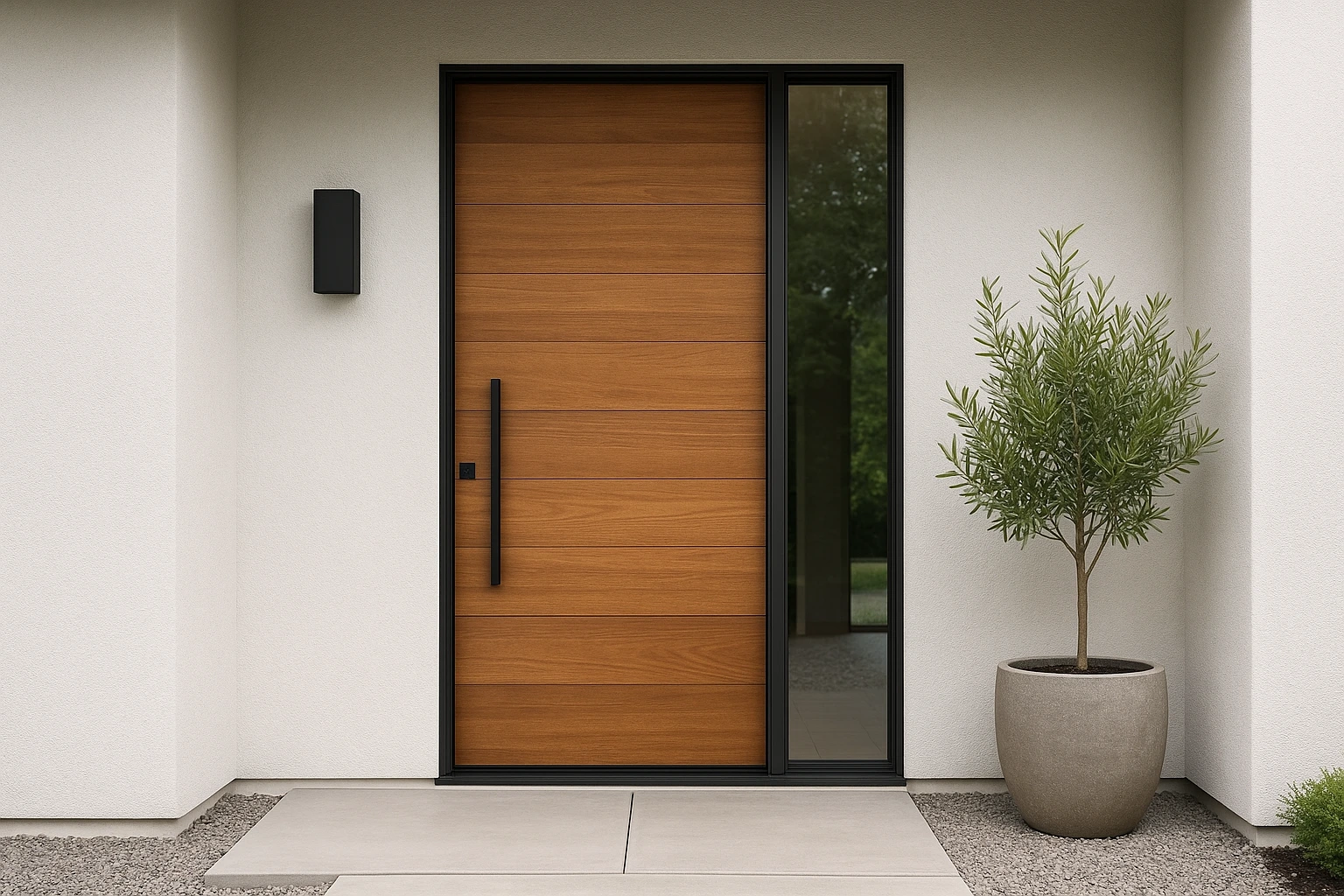You enter a house, and before one word of agreement would have been uttered, the door would have made a statement-rustic wood, ornate glass, or elaborated steel. Doors nowadays are more than just functional elements; they are a vital part of architectural storytelling. Doors can say luxury, charisma, security, or artistic license while still being the glue in your home’s aesthetic.
This article will discuss why decorative doors are important, the advantages they provide, the right methods to select one, and the design trends currently in the market.
Why Decorative Doors Are Important
First impressions are lasting impressions, and your door is going into your home or space. Decorative doors are far more than simple gateways; they set the tone for what awaits inside on most occasions. The right door adds personality, warmth, and value to a quaint cabin, a modern getaway, or an elegant abode.
Again, the National Association of Realtors says that a nicely designed front door could really make curb appeal pop and maybe pay a little more for the house. It’s just not really about looks — it’s about the appeal and marketing of a home.
Some Advantages of Decorative Doors
- Increased Aesthetic Appeal: Custom designs will instantly raise the beauty of your home.
- Increase Property Value: These doors, if branded by the likes of Therma-Tru or Pella, increase the resale value.
- Security and Durability: Today, decorative doors feature practical security functions without compromising on aesthetics.
- Energy-Efficient: The design of numerous models is geared toward providing insulation so that interiors receive comfortable surroundings throughout.
- Customization: From hand-carved wood to frosted glass, the possibilities are endless.
Choosing the Ideal Decorative Door
Step 1: Identify Your Style
Do you prefer simple modern lines or intricate Victorian flourishes? Browse styles according to the following options:
- Traditional: Raised panels, warm woods, decorative glass inserts.
- Contemporary: Clean lines, metal finishes, matte blacks, and frosted panes.
- Rustic/Farmhouse: Barn-style doors, distressed wood, wrought iron accents.
Step 2: Choose Proper Material
Each material solves a different need:
- Wood: Looks classic and can be customized, but may require maintenance.
- Fiberglass: Tough, weather-proof, and essentially appears good.
- Steel: Security and longevity are top priorities.
- Glass: Offers light and openness–interiors or sun-facing entrances.
Step 3: Consider the Use
Is it for a front entry or a patio door? What about an interior room divider? Based on that answer, start selecting features:
- Front Doors: Impact and security.
- Interior Doors: Privacy, acoustics, and seamless design.
- Sliding/Patio Doors: Natural light and ease of use.
Real-Life Examples: Doors That Say a Lot
Case Study: Modern Urban Townhouse in Chicago
A custom black steel door with vertical frosted glass panels was provided for this project. It turned a generic facade into a sleek and urban masterpiece while affording the owners a level of privacy and natural light.
Case Study: Spanish Colonial Revival in California
The double-arched mahogany doors with iron scrollwork and vintage handles furthered the real-world charm of the house and raised appraisal value.
Recommendations and Tips
- Always double-check measurements before ordering. Custom doors can’t always be returned.
- Match the door hardware with your home’s finishes: brass, matte black, or stainless steel.
- Put in sidelights or transoms for that grand feel and the extra sunlight.
- Think of maintenance in the long run-means wood or specialty glass.
Avoid These Common Mistakes:
- Neglecting the proportions: Too big, too small; it disturbs the balance.
- Clash of styles: A modern door on a traditional house will feel pretty awkward.
- Over Investing: There are times when simple and clean stand out.
- Not considering functionality: Being beautiful is all well and good, but it shouldn’t compromise insulation or security.
Future Trends in Decorative Doors
- Smart Doors: These will feature integration with keyless entry, video doorbell, and home automation.
- Sustainable Materials: Think bamboo, reclaimed wood, and eco-friendly manufacturing processes.
- Bold Coloration: Deep navy, forest green, and burnt orange are colors to keep an eye out for.
- Mix and Match Textures: Metal frames with wood or stone inlays.
Conclusion: Your Door, Your Story
Decor-image” doors are far greater than displaying entryways, motivation-for-style security, and intent. Whether upgrading for curb appeal, renovating interiors, or building a new home for oneself, the door in question really can speak multiple languages.
Ready to rock a powerful entryway? Explore custom door-makers, collaborate with a design specialist, or simply shop among popular names such as Simpson, Jeld-Wen, and Andersen. Need help designing that dream door? Subscribe to our newsletter for all tips, design tools, and exclusive resources.




